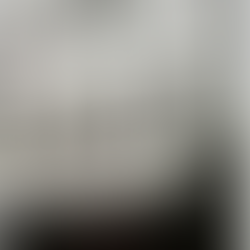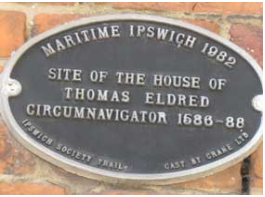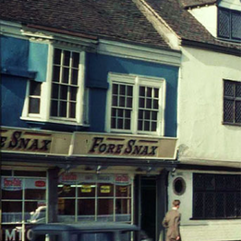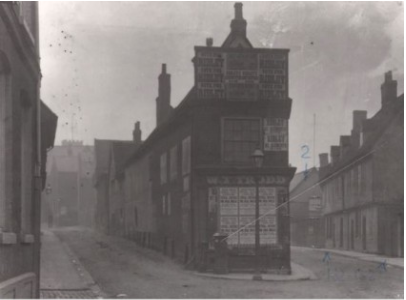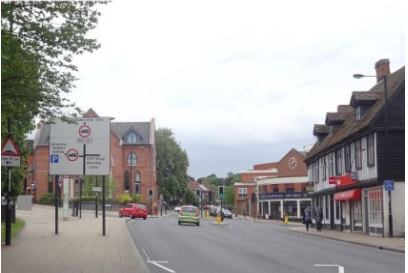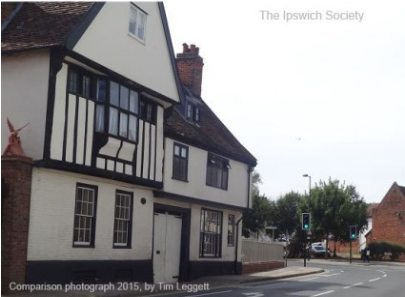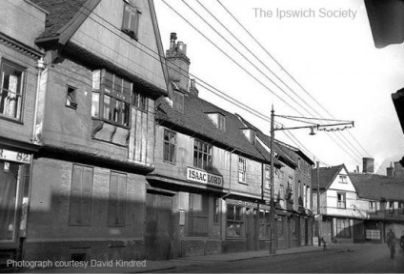IN AND AROUND FORE STREET
Angel Lane

An Edwardian postcard from the collection of Kerstin Fletcher showing, at the right, the Lion & Lamb public house at the junction of Fore Street and Angel Lane, across which stood the Old Angel Inn. The photograph below moves us slightly to the right to show the view up the lane with the Old Angel Inn opposite to the Lion & Lamb (with the lamp on its corner). The entrance to St Clements Church Lane is clearly signed on its wall. See our map of Fore Street pubs.

The building at the extreme right stands where Fore Street Baths is today. The baths were opened as shown on the brass plaque by the entrance:
‘THESE BATHS WERE ERECTED BY THE CORPORATION OF IPSWICH. THE SITE AND £1200 TOWARDS THE COST BEING THE GIFT OF FELIX THORNLEY COBBOLD ESQUIRE. SAMUEL RICHARD ANNESS MAYOR, T.W. COTMAN ARCHITECT, T. PARKINGTON & SONS BUILDERS. MARCH 1ST 1894.'
It is the second oldest operational swimming pool in the country.
See also Fore Street maps showing Listed buildings and Public houses.
Fore Snax, Rutters, Jacksons
On enquiring about the location of Mellonie's Coal Yard, we received a contribution from Cllr John Mowles (having discussed this with his sister):“… between the Mellonie's fence and the (now) ‘Fore Snax' premises there was access to the dockside (as now) although we're unclear as to whether there was public access. We do know that the ‘Fore Snax' premises was a shop called Rutters. We used to buy batteries and accumulators for our pre-electric radio from there. I'm pretty sure they repaired bicycles and the like there, too. I remember the shop quite well and access was from Fore Street itself and not from any access road aforementioned.
What we (and presumably, all) are aware of is that opposite Rutters and was Jacksons chemists.”
'Fore Snax' at 90 Fore Street, with its very 1960s nomenclature, is a café which has had a number of names over the years, but many still know it as the Neptune Café.
The chemist's shop at 97 Fore Street had ealier been owned by 'E.J. Owles' (as recorded on the frosted door glass which can still be seen). At the time of this photograph it was owned by John Thomas Jackson and his wife Lydia [photograph courtesy John Michael Bryant]. In 2017 Charles Simpson added:
‘I have in my possession a copper printing plate (165x70mm) for an invoice header. This was found by my grandmother behind a stove at Jackson's Chemist Shop ... in Fore Street during the 1920 to 1960 period. My grandfather had bought the business from Mrs Jackson and spent his working life there as a chemist and poor man's doctor. The decorative script in a variety of typefaces surrounds a seated Chinese merchant, pagoda, palm (?) trees, sailing ship and oriental goods for export. The script includes "Ipswich St. Clements", "18-- (date)", "Bo(ught) of C. Barker", "Teas genuine as imported", "Grocer, Tea Dealer & Ship Chandler", "Cheese & Butter Warehouse", "Hops, Fruits, Spices, Coffee &c.” ... My grandfather, Brinley Davies, and his son, Evan, had the shop until the (?) early 1970s; I think the next occupant was the Labour Party. My mother ... well remembers sleeping under the dining table there as protection from the German bombs!' Charles also found this: ‘Mr. E. J. Owles, Ph.C, has removed his business from 55 Trafalgar Road, Greenwich, London, S.E., to No. 24 in the same thoroughfare. The former premises are to be pulled down and rebuilt.
Research shows that E.J. Owles owned the chemist's shop from at least 1881 to 1885 (trade directories are gappy).

‘Ipswich St. Clements 18..
Bot. [Bought] of C. Barker,
GROCER, TEA DEALER, & SHIP CHANDLER. Cheese & Butter Warehouse.
TEAS Genuine AS Imported. Hops, Fruits, Spices, Coffee &c.'
Charles adds: 'I have now found a lease document dated 13th June 1912 from Henry Beaumont Owles, wholesale grocer of Bungay to John Thomas Jackson, chemist for 97 Fore Street at £50 pa. Unsure of the relationship with E.J. Owles of Greenwich.'

Thomas Eldred's house. On the side of 97 Fore Street is a metal 'Maritime Ipswich 1982' plaque (cast by the Ipswich company Crane Ltd) telling us that this was the site of the house of Thomas Eldred (1561-1624), circumnavigator of the world. See the line and wash drawing of the original house, now demolished and replaced by the current building. Eldred was an Ipswich merchant and mariner who sailed with Thomas Cavendish (also of Suffolk) on the second English circumnavigation of the globe 1586-88. Sir Francis Drake's voyage 1577-80 was the first. Cavendish was born in 1560 at Trimley St Martin near Ipswich.
Inside the Upper Chamber in Christchurch Mansion is a panel of 16th century decorative painted plasterwork which was taken from ‘The House of Eldred The Navigator, Fore St. Ipswich. Presented by Mr J.D. Cobbold'.
See also Fore Street maps showing Listed buildings and Public houses.
Fore Street/Fore Hamlet Junction

Identification of locations in old photographs can pose a challenge. This view came from Tony Hill's research documents into Fore Street and we had trouble pinning it down until Tim Leggett posted the image on the Ipswich Society's Facebook page.
Justin Grimwood, to whom our thanks, responded with not only a location, but proof in the form of a map:
“I think it's Fore Street, corner of Back Hamlet/Fore Hamlet with Holy Trinity in the background. William Tunstall, Grocer, Provision Merchant, Tallow Chandler lived at 137 Fore Street and a map of 1881 shows letter box and lamp-post in correct place.”
The 1881 map of the meeting of Duke Street, Back Hamlet, Fore Hamlet and Fore Street clearly shows these features. The most surprising thing, to many who don't know the history of the junctions at this point, is the long finger of buildings projecting westwards into Fore Street. So much so, that the Social Settlement would have been largely invisible from the southern side. Everything - until the twentieth century road widening schemes - is closely-built around narrow thoroughfares.
The comparison map from 1902 indicates changes, but it is only when we superimpose one on the other (an approximate fit) that we see the differences clearly.
Tim Leggett has provided a 2015 view of this scene, using the scant identifiable features which remain today (see below).
It looks very much as if the shop run by W.T. Trodd which is at the narrow end of the 'finger' projecting into Fore Street has closed down by the time of this old photograph. The election posters promoting Ridley may suggest a more accurate date for this scene. The ropemakers' cottages (which today include Offord's Newsagents at number 132-4 Fore Street) can be seen at the right hand side, although it looks as if any timbering is covered up with cement or plaster. Today the black and white frontage is a recognisable feature at this location, with its bressumer above the ground floor level dated '1620'.
See also Fore Street maps showing Listed buildings and Public houses.
Fore Street Post Office

Brian Jepson's own hand-lettered label to his photograph is dated 1999 and captions the photograph: 'Fore Street - 40 years ago. Now IE Electric & Post Office'; this dates the view to c.1959. Brian would have had a particular interest in this view as it is the one he would have seen from his own front windows of 'The Cor Visser House'. At the time of the photograph Smyth Bros. Builders Merchants had a remarkable number of individual and linked shops in Fore Street – far more than Martin & Newby. Here we see three linked shops including the building with the two dormer windows.
These buildings once included a public house called the Bull & Dog; today it is Fore Street Post Office. See our map of the historic pubs in Fore Street.
The Post Office Manager, Janet Brooks, kindly sent an update to this page in August 2022, for which we are grateful:-
‘Fore Street Post Office started life at No. 57 Fore Street and from 1892-1943 Kelly's Directory lists the Mapperley family as the owners. There is a brass plaque inside St Clement’s Church saying Mr Mapperley died at the age of 40 in 1899. His wife and son continued running the business.
Throughout the 1800s up until 1921, No.55 next door was The Bull & Dog Inn. On closing, the front was replaced with large shop windows and the floor lowered to pavement level. Subsequently a nurseryman used the premises until 1929, followed by a furniture dealer until 1943.
The next entry is from 1947 where the Post Office has now moved to No. 55, run by Mr Healey who was also a printer and stationer. During the 1960s the Post Office moved opposite the bottom end of Grimwade Street [see the monochrome photograph at the bottom of this web-page]. At this time No.55 was used by Smyth Bros while No. 57 was listed as a café. Mr Dodd bought the Healey’s business, retaining the name and basing it in Nos. 49-53 Fore Street with the Post Office returning to No.55 which is where it remains today.
Sadly, in the early 1970s Nos. 57-65 were demolished.
I looked this information up many years ago when I first bought No. 55. Somewhere (no idea where) I also discovered that in 1858 there was a receiving house where letters were despatched by Charles Read and, in 1888, a mail receiving office with pillar box was at Trodds Corner. No idea where that was situated.’
Given its role as a main shopping street, home to many businesses (see Ted King's oral history account), Fore Street definitely deserved its own Post Office and it still operates today.

Here's the view in 2014 of the truncated building north of the Post Office, cut off by the Star Lane Gyratory traffic system created in the 1980s. The roof with the dormer windows has been extended left over the next-door shop.

The David Kindred set of photographs, linked on our '61 Photos page, includes the monochrome view shown here of the Post Office at its original site sandwiched between two parts of Meux Maltings. The Grimwade Street junction faces these buildings. The P.O. at this location also appears in the Ipswich Society film (linked on the Audio/Film page, with film stills) showing a postman on GPO bicycle arriving outside the Post Office. Another interesting feature of this photograph is the sign in the window: 'C.H. Healey ... Printer, Stationer'. See details above of the story of the Fore Street Post Office.
See also Fore Street maps showing Listed buildings and Public houses.
Isaac Lord
The Isaac Lord merchant's house at 80 Fore Street in 1934; note that the timber-framed building is closely built on both sides at that time. The Lloyd's Bank building would occupy the space to the right, note the narrow junction with Salthouse Street beyond. Comparison photograph: the Isaac Lord merchant's house in 2015, by Tim Leggett. Ted King describes this row of buildings in detail in the oral history donated to this project:
"Next to that was a row of offices [Isaac Lord]. That was an old-fashioned building with timbers outside, overhanging upper floor, diamond windows. And in the middle of this office block - which would be, I should say, thirty feet long - that had a real, oak gatepost and a square lintel over the top, which was horizontal and not curved. That had two heavy oak doors with square-headed nails driven in; they were not ornaments, they held the door together. That double door was about ten or eleven foot high. That led into a courtyard. In the courtyard on the right was the entrance to an office. I don't know what was stored in there; I never went in that place. The other side of that office were three, if not four, cottages. They had no gardens, only a narrow strip of soil about two feet wide, where the occupants planted brightly coloured flowers and they had brightly coloured flowers climbing up the wall. This courtyard also was cobbled and at the bottom of it, I suppose it would be a mill, where they processed barley and malt and dried hops. Well, entering the gateway on the right was another door (which faced the opposite door). But that one - you went up two steps to it - and that was an office. It had a rough, wooden floor with a moth-eaten piece of carpet on it, it was a coloured thing. And it had a tall wooden desk; I would say it was about four-foot-six high. Two clerks sat there and they faced a diamond mullioned window onto Fore Street. They sat on high stools with backs on, something like Charles Dickens' day.
Well, that property was owned by a couple of elderly men - they were once young, 'cause they'd been there years: known as Mr Sizer and Mr Lord. I never did meet Mr Lord, but I met Mr Sizer many times. He was a tall man with a dark suit, tight pipe-leg trousers and he wore a long black coat with a waistcoat almost up to his Adam's apple and he wore a deep, white, starched collar. That looked uncomfortable and most probably it was. He was a white-haired man with a white beard. He had an office somewhere which was through the other office. But he was Mr Sizer and also, come to mind, he had a coal-yard in the property at the back of the office. He supplied coal and, of course, he had stables. He supplied bushels of malt and pounds of hops and yeast that the country people used to come for - I've been there myself - to make their beer.
He also delivered coal. If I remember rightly, there were three men lived in those cottages: one was a man who looked after the malt and things like that and did the odd jobs and two men went out on the cart. They always went out loaded with coal; they used to pass the house where I lived - well, when I was not at school - every day of the week, including Saturdays."

Isaac Lord merchant house (an internal beam in this part has been dendro-dated 1478); the sign in the window reads: ‘Isaac Lord Coal & Corn Office'.
See also Fore Street maps showing Listed buildings and Public houses.

